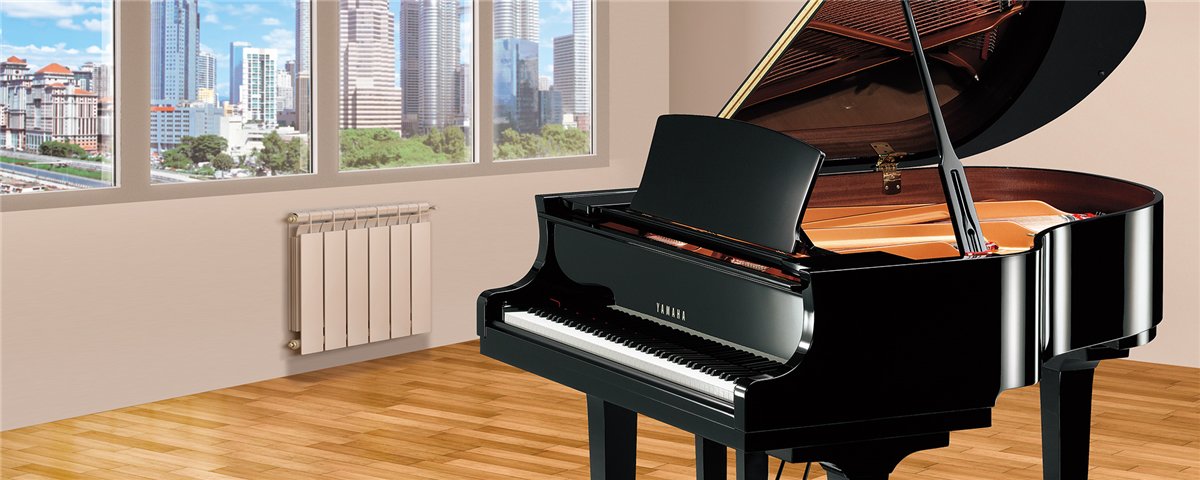CX Series
Designer Interview

With the CFX we wanted to break down grand piano stereotypes and conventions.
When designing the CFX, Yamaha’s new flagship model, we were attempting to achieve two things. The first was to emphasize the fundamental attraction of the grand piano by honing its performance, and the other was to show the innovation of a modern piano. We hoped to use these steps to break down the traditional stereotypes and conventions associated with grand piano design.
The concept behind the CF Series is "Beauty and Power." This concept was intended to take the rich, expressive, beautiful tone of the these pianos, ranging from the most delicate pianissmo to resonant, powerful fortissimo, and convey it to the farthest corners of any concert hall. We felt that the projection of the design should ideally be unified with the projection of the instrument’s sound, and thus crafted clear, powerful shapes for the sides of the instruments in order to convey an impression of exquisite sound to the audience. This resulted in a design that draws the attention of every member of the audience to the external appearance of the CFX. Although the destinctive shape of the case side arms showcases the innovation of the CFX, from the performer’s point of view the number of elements in the instrument’s form has been reduced, inspiring them through the combination of an increased feeling of space and freer perceptions. Accordingly, the design employs the viewpoints of both the performer and the audience in enhancing the beauty of the fingers and form of the pianist.
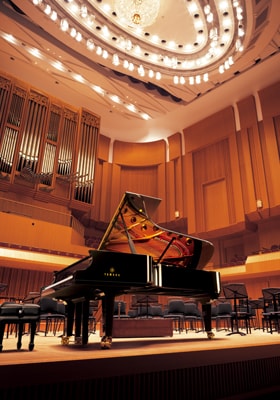
The pedal box has been constructed using a new design featuring two legs inserted into a box. This innovative structure is strong enough to withstand a pianist’s full pressure on the pedals, while at the same time reflecting the innovation of the CFX in an entirely new shape. Furthermore, any extraneous elements of the shape have been removed from the instrument as a whole, so that it embodies the idea of a sound that has been refined down to the bare essentials; a new configuration in which in which all parts are connected with a refined balance. With a grandeur and dignity befitting a full concert grand, and a unique silhouette that conveys the presence of the CFX to the furthest corners of any hall, I believe that we have been able to achieve the modern grand piano design that Yamaha was looking for.
At the same time, we were able to imbue the design with Yamaha’s strong desire to always remain of the forefront of the modern age.
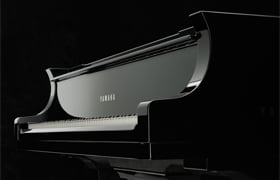
The CX Series places priority on the viewpoint of the pianist, achieving innovation as a modern piano
The CFX concert grand piano, and the CX Series - Yamaha’s core grand piano models - have been designed with entirely different pianists and situations in mind. However, in each and every piano that Yamaha makes, the goal of creating a truly modern piano design remains the same. This is evident in our efforts with the CX Series to remove any extraneous design elements, and to refine and reconstruct the connection and balance in areas such as the shape of the side boards, the feet and legs, and the legs and pedal box. While one of the important characteristics of the CX Series lies in the elimination of surplus ornamentation from the case arms, this design philosophy has been applied throughout the series in areas such as the pedal box and the ends of the legs. Although conventional pianos employ older architectural styles, the CX Series feautures no such elements, and has instead been refashioned in a modern style. This follows the new design trend that the CFX set for Yamaha pianos.
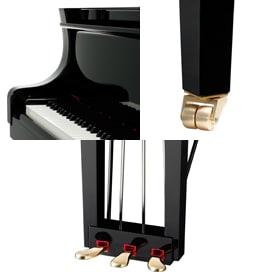
However, unlike the CFX, which was designed to be used in concerts, the CX Series is intended for use by families, as practice instruments for conservatories, or for small concerts in university auditoriums, and thus features an external design that stresses the point of view of the pianist rather that that of the audience. The CX Series has no need of the sideboard construction of the CFX - an instrument which is built to project sound - and thus achieves an elegant simplicity through a combinination of the traditional shape of a grand piano with both curved and straight lines. This approach emphases the series' flat mirror black surfaces around the case arms, which I believe showcases the appeal of the high level of quality of pianos made in our Kakegawa factory. Moreover, the frame features a new tuning fork mark and model number logo that illustrate the high quality of the instruments. I think that details such as these present an image of the refined feel of the entire piano.
A major factor in the design of the CX Series was the success of our flagship model, the CFX, which is why I was confident that the modern piano design we created would be well received. While in the past there had been worries that changing the image of the product too much would not be well received by our customers, we were able to alter this thinking, and received the go-adhead to alter as much as we want. With the CX Series as well, I think that we have achieved a design that represents our true intentions.
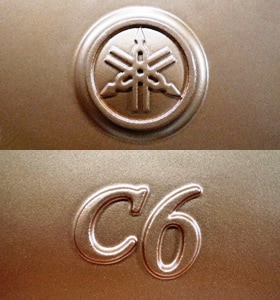
a new tuning fork mark and model number logo

Kazuhito Nakajima
Yamaha Product Design Laboratory
Kazuhito Nakajima joined Yamaha in 1990. He was assigned to product design for sporting goods prior to being assigned to instrument design the following year, and has participated in product design for many acoustic and digital instruments.
Nakajima also works to bring technical art values to the ornamentation of acoustic instruments, and has been responsible for product graphics used in the logos and packages of many products.
Currently, in addition to musical instruments, Nakajima is the Product Design Group manager responsible for a broad range of products, including everything from golf goods to acoustic products such as PA and AV equipment.

